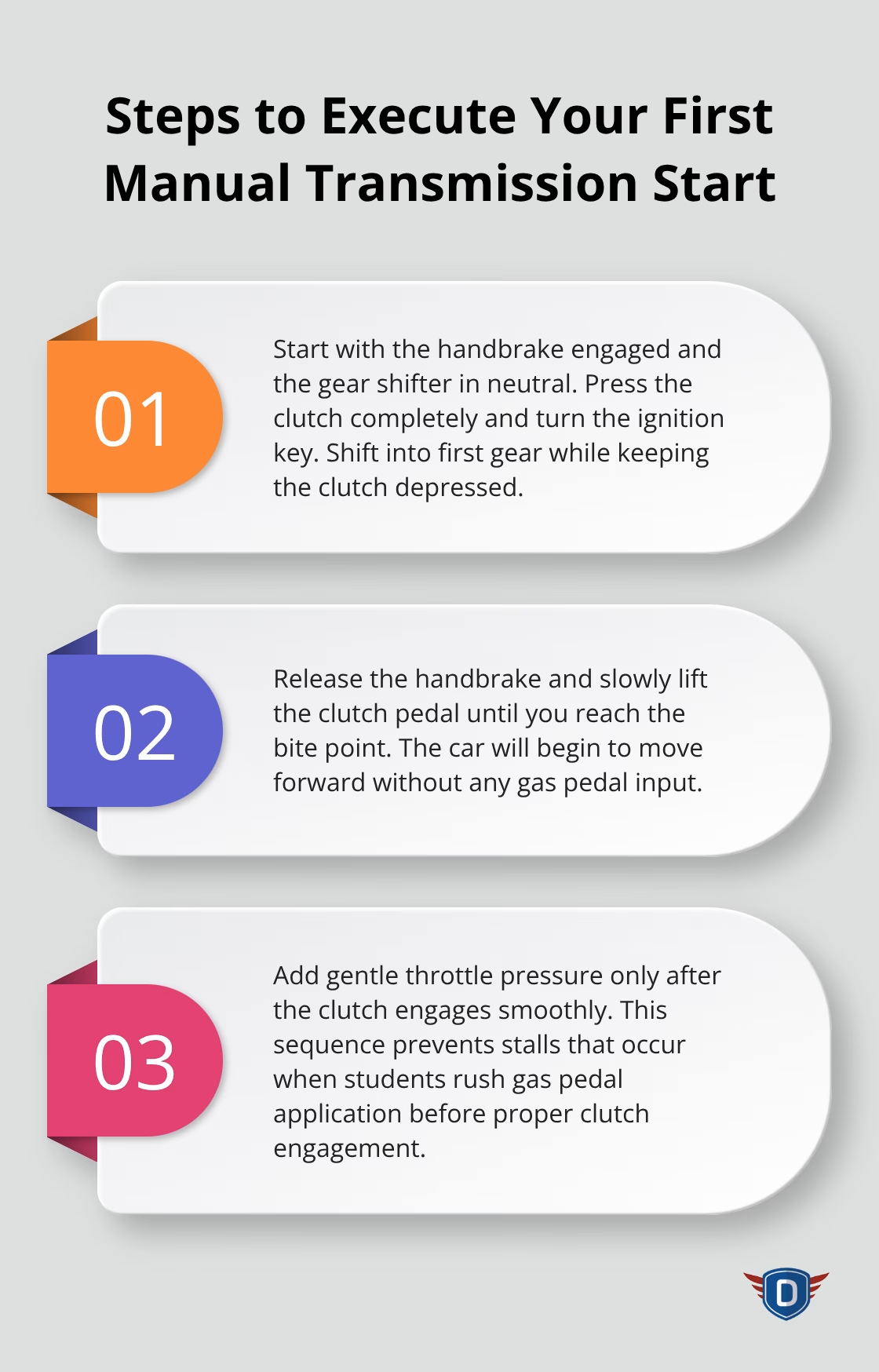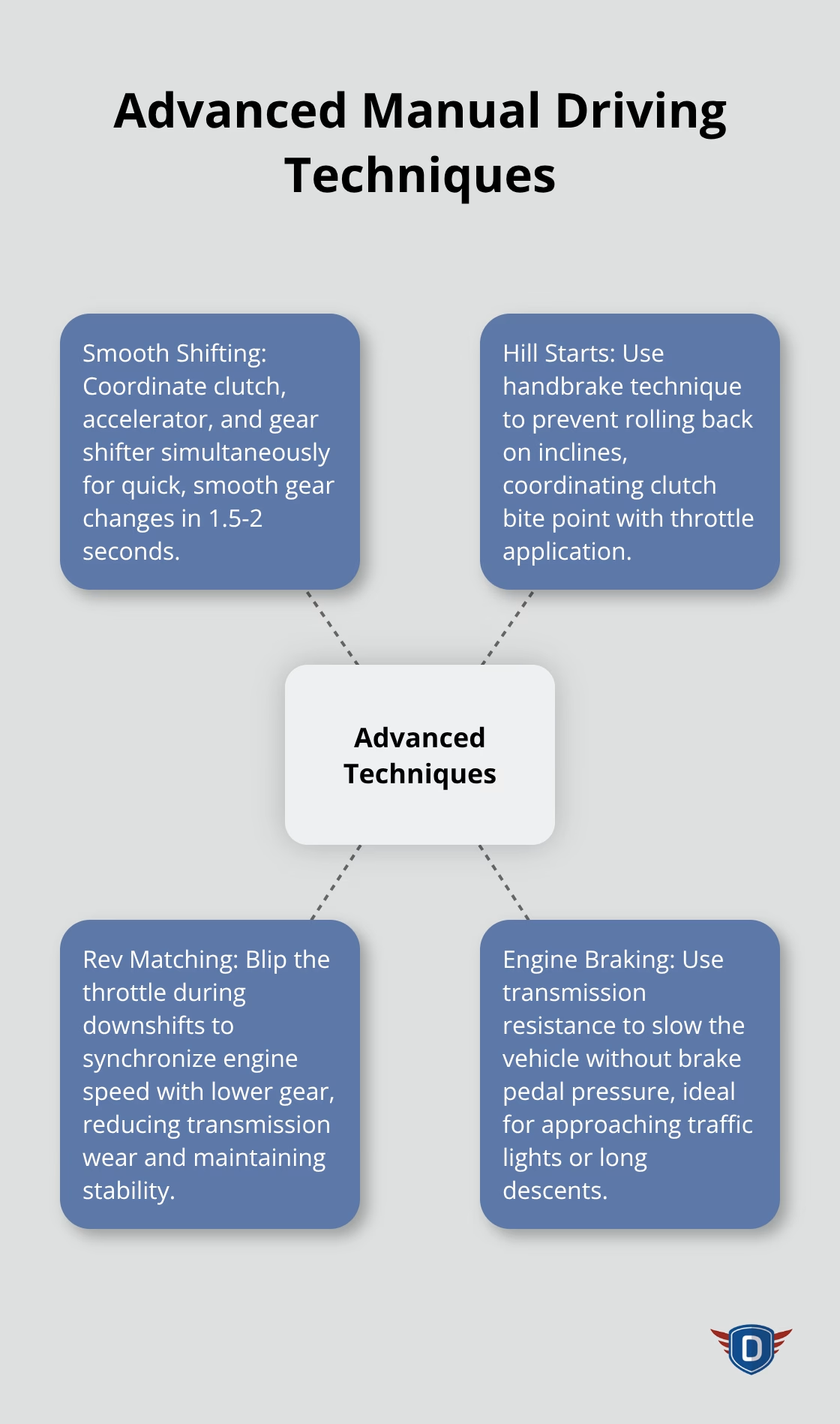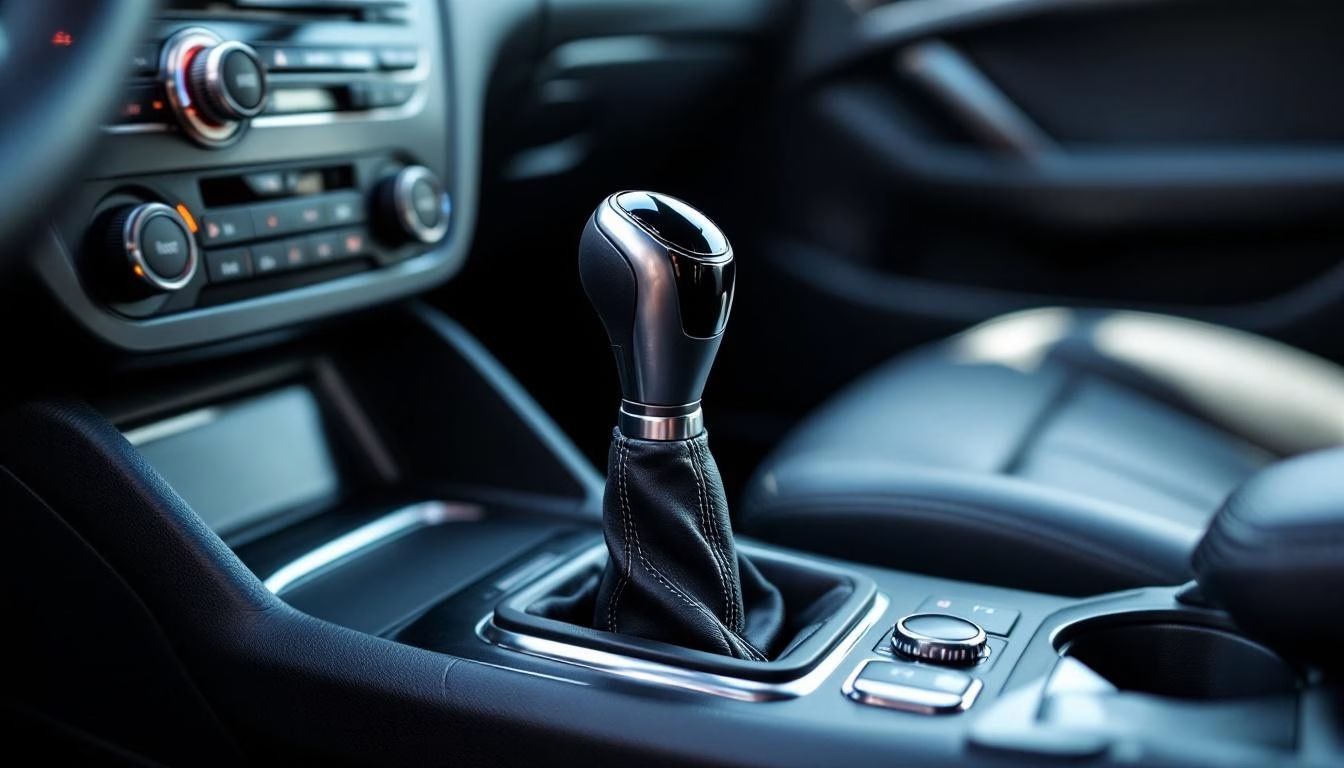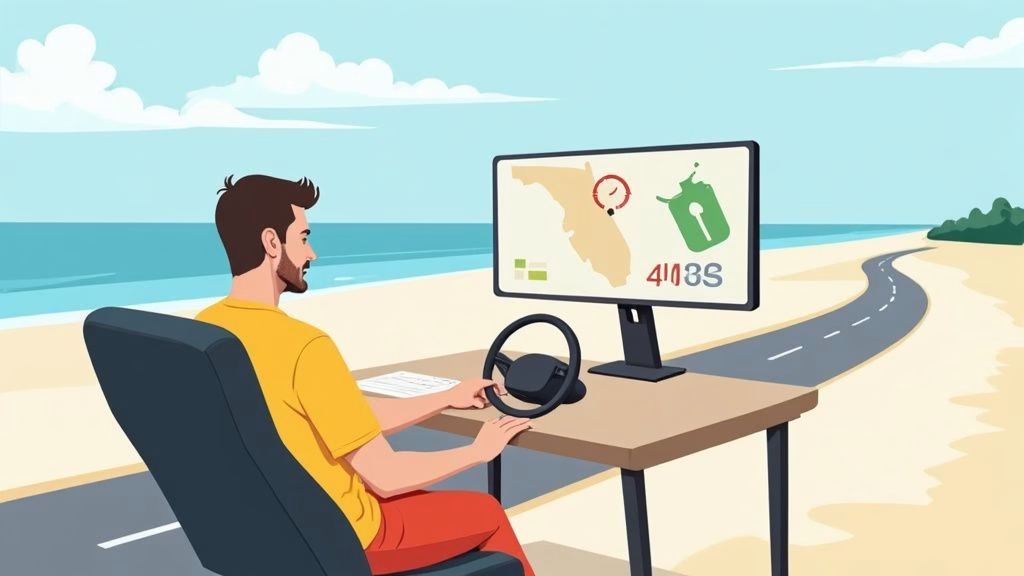Manual transmission cars still represent 41% of global vehicle sales, yet many drivers avoid them due to perceived complexity. The reality is that mastering stick shift opens doors to better fuel economy, enhanced vehicle control, and lower maintenance costs.

At floridanewdriver.com, we’ve seen countless students transform from clutch-stalling beginners to confident manual drivers. Quality manual transmission driving lessons focus on muscle memory development and proper technique rather than just theory.
Understanding Manual Transmission Basics
How the Clutch System Functions
The clutch system uses a pressure plate that connects and disconnects your engine from the transmission. When you press the clutch pedal completely, you separate the engine from the wheels and allow gear changes without metal grinding. The friction disc sits between the pressure plate and flywheel to control power transfer. When the clutch pedal is released, the pressure plate applies force to the clutch disc, causing it to press against the flywheel. The bite point happens when the clutch starts to engage, typically halfway through pedal travel. This zone spans roughly 1-2 inches of pedal movement where smooth control becomes essential.
Gear Patterns Follow Standard Logic
Standard manual transmissions use an H-pattern with first gear at top left, then move through second, third, fourth, and fifth in sequence. Sixth gear sits directly right of fifth in most setups. Reverse gear placement varies by manufacturer but commonly requires you to lift a collar or push down while you move left and up. Modern synchromesh transmissions use a synchronizer hub, shift sleeve, cone, and ring where shift sleeves match gear speeds, then mesh with the gear and drive shaft. Shift between 2,000-3,000 RPM for optimal engine performance and fuel efficiency. The tachometer provides the most reliable reference for shifts (not engine sound or vehicle speed).
Three Pedals Control Vehicle Operation
The clutch pedal, gear shifter, and engine speed management work together as the core components of manual transmission operation. The clutch pedal sits leftmost and needs full depression for gear changes. The brake pedal occupies the center position with progressive pressure control for smooth stops. The accelerator pedal on the right provides throttle input that must coordinate with clutch release. Your left foot operates only the clutch, never the brake pedal. This separation prevents confusion during emergency situations. The handbrake lever locks rear wheels independently and prevents roll-back on inclines during hill starts.
Once you understand these mechanical basics, you can focus on the physical techniques that transform knowledge into smooth operation.
Getting Started with Manual Transmission
Your seat position determines everything about clutch control success. Set your seat distance so your left knee maintains a slight bend when the clutch pedal reaches the floor. Major safety issues have been identified regarding pedal misapplication in vehicles, often caused by incorrect seat position. Your back should rest against the seat with shoulders relaxed and arms slightly bent when you hold the wheel at 9 and 3 o’clock positions.
Master the Clutch Bite Point First
The bite point occurs when the clutch disc begins to engage with the flywheel, typically 40-60% through pedal travel (depending on your vehicle). Practice this without the engine on by pressing the clutch fully, then slowly release until you feel resistance increase. This spot varies between vehicles but remains consistent for each car once you identify it. Professional instructors recommend 15-20 minutes daily of bite point recognition practice before you attempt actual starts.
Execute Your First Movements Step by Step
Start with the handbrake engaged and the gear shifter in neutral. Press the clutch completely and turn the ignition key. Shift into first gear while you keep the clutch depressed. Release the handbrake and slowly lift the clutch pedal until you reach the bite point. The car will begin to move forward without any gas pedal input. Add gentle throttle pressure only after the clutch engages smoothly. This sequence prevents stalls that occur when students rush gas pedal application before proper clutch engagement.

Build Confidence Through Repetition
Practice these basic movements in an empty parking lot or quiet residential street. Start with 10-15 successful takeoffs before you move to more complex scenarios. Each successful start builds muscle memory that becomes automatic over time. Focus on smooth pedal coordination rather than speed during these early sessions.
Once you master these fundamental starts and stops, you can tackle more advanced techniques that separate competent drivers from true manual transmission experts.
Advanced Manual Driving Techniques

Smooth Shifting Requires Perfect Timing
Smooth gear changes happen when you shift and coordinate three actions simultaneously. Press the clutch fully while you ease off the accelerator, move the gear shifter decisively to the next position, then release the clutch while you gradually apply throttle. The entire process should take 1.5-2 seconds maximum. Hesitation during shifts creates jerky movements and premature clutch wear. Professional drivers shift without looking at the gear pattern because muscle memory eliminates guesswork. Practice shifting gears through all gears while stationary with the engine off until the motion becomes automatic.
Hill Starts Demand Handbrake Technique
Hill starts separate competent drivers from beginners because gravity works against clutch engagement. Engage the handbrake fully when you stop on any incline steeper than 5 degrees. Press the clutch and shift into first gear, then slowly release the clutch until you feel the bite point. Add throttle to reach 1,500-2,000 RPM while you hold the clutch steady at the engagement zone. Release the handbrake quickly once the engine pulls against the clutch. This technique prevents rolling backward and reduces clutch wear compared to foot-juggling methods. Modern hill-hold systems activate automatically but proper handbrake technique works in any vehicle.
Rev Matching Eliminates Downshift Shock
Rev matching involves blipping the throttle during downshifts to synchronize engine speed with the lower gear. Press the clutch, move to neutral, tap the accelerator to raise RPM by 500-800, then shift into the lower gear while you release the clutch. This technique reduces transmission wear and maintains vehicle stability during deceleration. Heel-toe downshifting adds braking while you rev match (using your right foot’s heel for the brake and toe for the accelerator). Master basic rev matching first because heel-toe requires weeks of practice to coordinate properly.
Engine Braking Maximizes Control
Engine braking uses transmission resistance to slow your vehicle without brake pedal pressure. Downshift to a lower gear and let the engine RPM naturally decrease vehicle speed. This technique works best when you approach traffic lights or need gradual deceleration on long descents. Engine braking reduces brake pad wear and provides better control in wet conditions. These advanced defensive driving techniques help maintain vehicle stability. Avoid engine braking below 1,500 RPM to prevent engine lugging (which can damage internal components).
Final Thoughts
Manual transmission mastery delivers measurable benefits that extend far beyond basic skills. Drivers who master stick shift typically achieve 10-15% better fuel economy compared to automatic transmission counterparts. Manual vehicles cost approximately $1,000 less than equivalent automatics, while the enhanced vehicle control becomes particularly valuable during adverse weather conditions and emergency situations.
Confidence builds through consistent practice in progressively challenging environments. Start with 30-minute sessions in empty parking lots, then advance to quiet residential streets before you tackle highway routes. Focus on one technique at a time rather than attempt multiple skills simultaneously (most students achieve basic proficiency within 8-12 hours of focused practice).
Professional manual transmission driving lessons accelerate the process significantly. Certified instructors provide personalized guidance that helps students master necessary skills while they develop lifelong safe habits. Students who receive professional training typically reduce their time by 40-50% compared to self-taught methods, and floridanewdriver.com offers structured programs that eliminate bad habits before they form.







